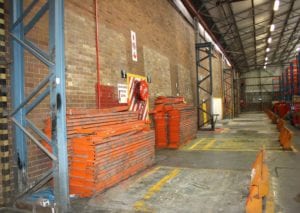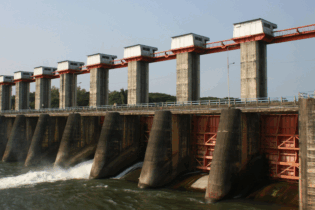In the early hours of 26 March, a fire broke out at the Sun Oil warehouse in Mobeni, south of Durban.
The fire, which lasted about six hours, threatened to spread to the adjacent Kansai Plascon warehouse but was prevented by the building’s six-meter high firewall. The firewall was constructed of Corobrik’s clay face. Wayne Usher, from Walker Smith Architects and Jim Martin from Martin & Associates Consulting Engineers, inspected the wall following the fire. “I believe one of the main reasons this wall withstood an intense fire for six hours without failing was that it was constructed from clay brick and not one of the other options,” explained Usher. “This is due to the process of making clay bricks where they are fired in a kiln at temperatures well over 1000 degrees Celsius.”Firewalls
He explained that firewalls are commonly used to separate larger buildings into smaller areas or, as in this instance, to separate buildings on different sites from each other to prevent the spread of fire. “This is particularly important where there is no building line and it is permitted to build right up to your boundary,” said Usher.“As a passive means of fire protection they are invaluable as they are relatively cheap to install, require little to no maintenance and, as evidenced here, work very effectively in stopping the rapid spread of fire.”
Fire walls can be provided with ratings from 30 minutes – which is typically a single-skin brick wall of 110mm – up to 120 minutes – which is usually a double skin brick wall of 230mm – as in this case. These walls are constructed from hollow concrete blocks, cement bricks or clay bricks. He concluded that in this instance, the wall is leaning post-fire because of the mortar used to bind the bricks having degenerated in the fire, and not any failing in the case of the bricks. This section of the wall can be rebuilt using the same bricks.







